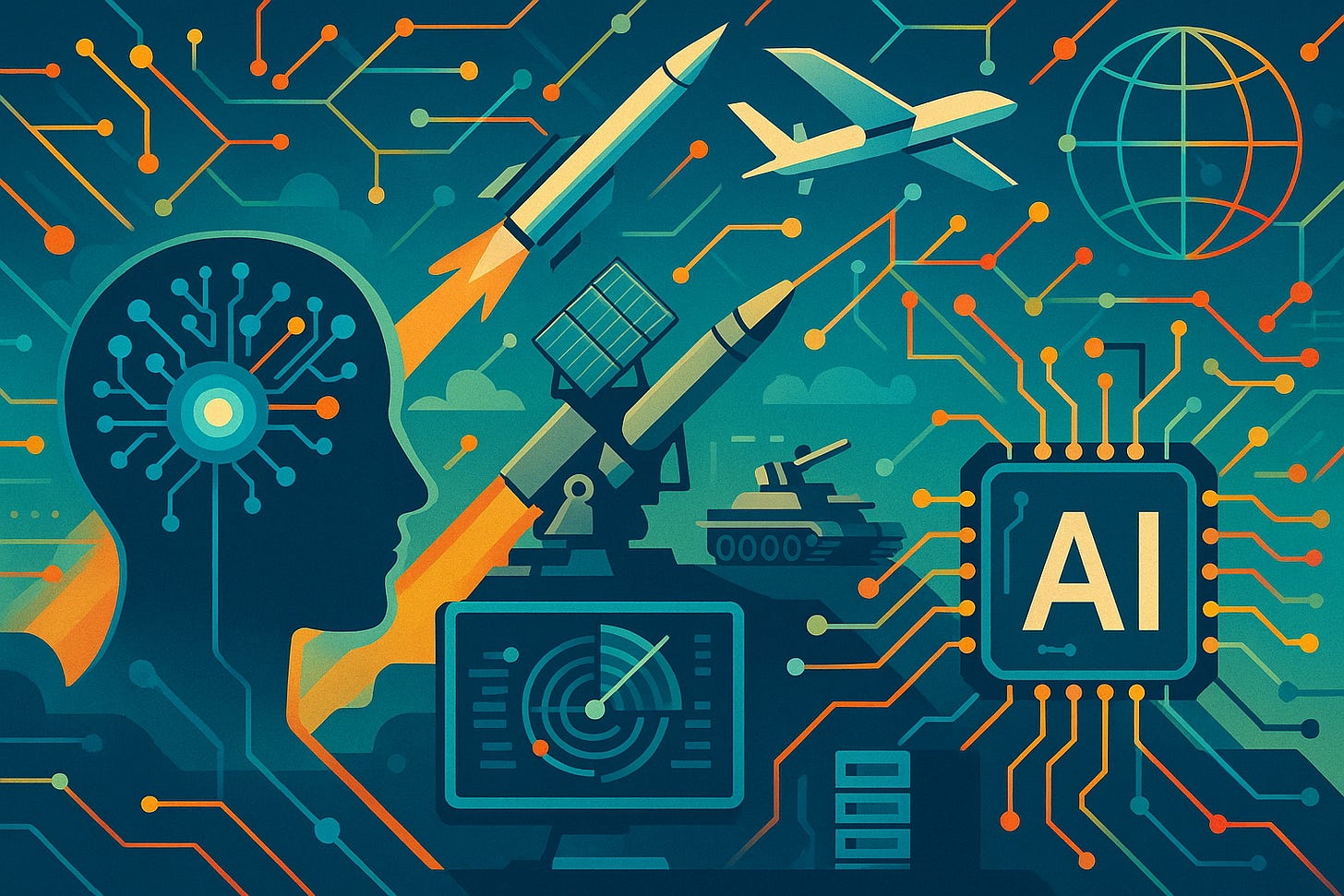Executive Summary
This report provides a comprehensive analysis of the strategic integration of artificial intelligence in defence, as articulated in official NATO and EU frameworks between 2023 and 2025. It maps the convergence of AI with operational domains such as C4ISR, autonomous targeting, cyber defence, logistics, edge computing, and decision support systems. Drawing exclusively on institutional sources—including EDF, DIANA, NIF, EIC, and EDA Innovation Prizes—it identifies how AI has moved from experimental concepts to embedded capabilities within NATO-EU joint planning and procurement logic. The report outlines how LLMs, AI-enabled autonomy, and predictive analytics are now central to European technological sovereignty and operational resilience.
From an investment perspective, the report highlights over 20 non-prime contractors—startups, scale-ups, and mid-caps—active in defence AI, many of which are already integrated into NATO or EU funding pipelines. It analyses which segments of the AI supply chain remain undercapitalised but strategically critical—such as embedded AI in autonomous systems, multi-sensor data fusion, and secure edge applications. Special focus is placed on companies receiving backing from NIF, EDF, and DIANA accelerators, positioning them as early-stage opportunities for institutional investors, family offices, and private equity funds. The report offers a structured view on entry points across the AI defence ecosystem, including co-investment pathways with public actors and medium-term M&A potential.
Introduction
NATO and the European Union have in recent years elevated artificial intelligence (AI) as a key element of defense innovation and strategy. NATO’s first AI strategy was endorsed by Allied Ministers in 2021, establishing fundamental Principles of Responsible Use (PRUs) for AI in defence (covering lawfulness, responsibility, explainability, reliability, governability, and bias mitigation). By July 2024, NATO released a revised AI Strategy reflecting the rapid evolution of AI capabilities and new challenges like generative AI. This 2024 update not only warns of threats such as AI-enabled disinformation, but also urges Allies to embrace the upside of AI, stating it is “vital for NATO to use these technologies … as soon as possible”. On the EU side, the European Commission and European Defence Agency (EDA) have similarly prioritized defense AI within broader initiatives. The EU’s 2022 Strategic Compass and related programs call for boosting Europe’s technological edge and “digitalisation” of forces, including investments in AI, cyber defence and data-centric capabilities. Through the European Defence Fund (EDF), the EU has begun directing substantial R&D funding into AI-enabled systems and other emerging technologies. Notably, over €1 billion from the EDF’s 2025 budget is earmarked for R&D projects “including AI-enabled systems and dual-use technologies”, underscoring that both NATO and the EU view AI as critical to future security.
This report surveys the state of military AI in 2023–2025 based on official NATO and EU sources, organized by thematic areas. It examines applications of AI in C4ISR (command, control, communications, computers, intelligence, surveillance, reconnaissance), operational autonomy, cybersecurity and information warfare, predictive maintenance and logistics, and the rise of large language models (LLMs) in defence. Across these domains, we map key programs and innovators – especially European startups, SMEs, and spin-offs participating in NATO or EU initiatives – and highlight investment opportunities aligned with NATO’s Emerging & Disruptive Technology (EDT) roadmaps and EU capability development plans. All information is drawn from primary, verifiable sources (with title, date, and authoring entity noted) to ensure accuracy and currency. The goal is to provide a comprehensive, up-to-date picture of how NATO and EU institutions are adopting AI for defence, the companies driving innovation, and the strategic directions guiding future investments – following the rigorous style and structure established in the previous report on drones.




